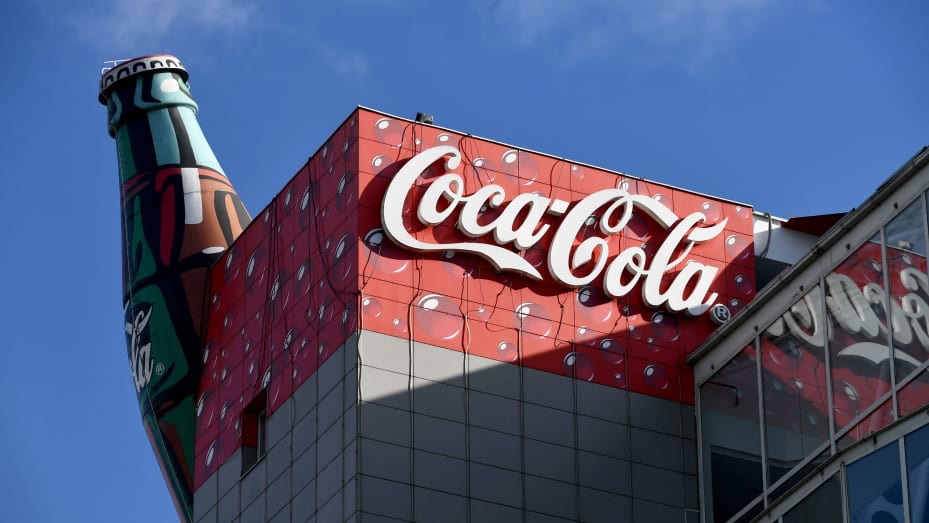The launch of New Coke is often remembered as a significant event, though not as Coca-Cola had anticipated.
The story is well-known, even to those who weren’t around during its 1985 debut. Coca-Cola introduced a new formula for its classic drink, believing the public would prefer what was informally called ‘New Coke.’
The reaction was overwhelmingly negative, leading Coca-Cola to reintroduce the original flavor within just 77 days.
The New Coke episode is infamous as a major marketing blunder. Coca-Cola faced substantial financial losses and considerable embarrassment.
The lingering question is: How could such a prominent company so badly misjudge the public’s reaction to its product, and was the entire debacle truly detrimental to Coca-Cola in the end?
Wars of Cola in the 1980s

During the 1980s, the cola market was primarily dominated by two brands: Coca-Cola, the industry leader, and its competitor, Pepsi.
Coca-Cola had long been the undisputed champion in the cola world, with its name almost synonymous with cola beverages. Pepsi, on the other hand, had not reached the same level of brand recognition. However, by the mid-1980s, Coca-Cola began to feel pressure from Pepsi’s growing popularity.
The challenge stemmed from Pepsi’s marketing strategy, particularly the ‘Pepsi Challenge,’ which posed a significant threat to Coca-Cola’s market share. These commercials showed that in blind taste tests, consumers preferred Pepsi’s taste over Coca-Cola’s. Essentially, while Coca-Cola had the stronger brand name, Pepsi’s flavor was winning over customers.
Faced with this challenge, Coca-Cola had to devise a strategy to maintain its market dominance. The question was, what steps should Coca-Cola take to effectively counteract Pepsi’s threat?
Introduction of the new Coke

Coca-Cola was taken aback when their own blind taste tests mirrored Pepsi’s results, showing that consumers preferred the taste of Pepsi.
Believing that the logical step was to alter their secret formula to make it sweeter, and thus more similar to Pepsi, Coca-Cola developed a new version of their drink. After taste-testing with 190,000 consumers, the results were clear: the new, sweeter Coke was preferred. It seemed that everything was set for the success of this new version of Coke.
On April 23, 1985, Coca-Cola confidently announced the launch of ‘New Coke,’ a reformulated version of their classic drink, which would now become the standard offering.
Despite Coca-Cola’s confidence in their decision, the immediate reaction from the stock market suggested a different sentiment. Pepsi celebrated what they considered a victory, giving their employees a day off and running celebratory ads in newspapers. These early reactions were merely a prelude to the larger public response that was about to unfold.
Backlash

The public’s reaction to New Coke was more than mere dislike; it was a profound and widespread outrage. Coca-Cola’s attempt to update their product sparked an extraordinary backlash.
Consumers stockpiled the original Coke, inundated the Coca-Cola Company with calls and letters, jeered at New Coke commercials, formed protest groups, voiced their discontent to newspapers, and even composed songs celebrating their love for the original flavor. In a notable act of defiance, residents in Seattle poured New Coke into the city’s sewers.
Despite Coca-Cola’s claims that the change was not an attempt to imitate Pepsi, the public was convinced otherwise. Adding to the turmoil, Pepsi capitalized on Coca-Cola’s misstep by airing commercials mocking their rival’s decision.
Initially, Coca-Cola resisted the public outcry. However, as the summer went on, it became clear that New Coke was a colossal mistake. Just 77 days after its debut, Coca-Cola held a press conference to announce the return of the original formula. This announcement was so significant that it was broadcast on news programs and headlined in newspapers nationwide.
While New Coke lingered for a time under the name ‘Coke II’, the original flavor was reinstated as ‘Classic Coke’. As many predicted, ‘Coke II’ eventually disappeared from the market and is no longer produced.
The Error
The core issue was the emotional connection consumers had with Coca-Cola, which was overlooked during the ‘Pepsi Challenge’ campaign. People cherished the idea of Coke, and their preference for Pepsi only emerged when they were unaware of the brand they were tasting. This highlights that consumer choices are not solely based on logic; emotions play a significant role.
For many, Coca-Cola was more than just a beverage; it represented a sentimental bond, like an old friend. The removal of this ‘friend’ caused a sense of loss and outrage. For some, Coca-Cola wasn’t just a drink; it was a symbol deeply entwined with their perception of American culture.
Was it so bad ?

Certainly, the launch of New Coke brought a wave of negative media attention and likely significant financial losses for Coca-Cola.
However, it also inadvertently reignited public interest in the brand. People who hadn’t thought much about Coca-Cola suddenly recognized their strong attachment to it. The nostalgia for the original flavor and the passionate public response served as unexpected positive promotion. In this way, the New Coke debacle ended up reinforcing consumer loyalty to the original Coke.
Reflecting on the incident in 1995, Roberto Goizueta, then CEO of Coca-Cola, acknowledged the mistake during the ten-year anniversary of the new formula. He admitted the error but also noted that Coca-Cola was thriving with increased market share and profits, despite Pepsi’s challenge to some of his figures.
Thus, the rivalry between Coca-Cola and Pepsi, known as the Cola Wars, continued.
Indeed, there are more critical arenas to make mistakes than in marketing and sales. For those interested in historical errors of a different kind, exploring a collection of significant military blunders could be enlightening.
